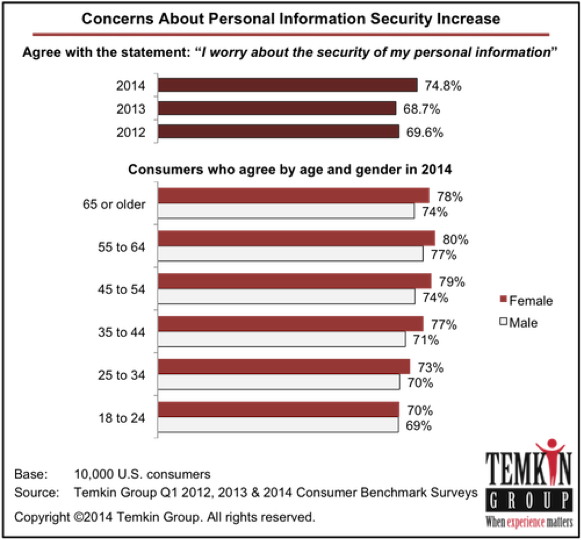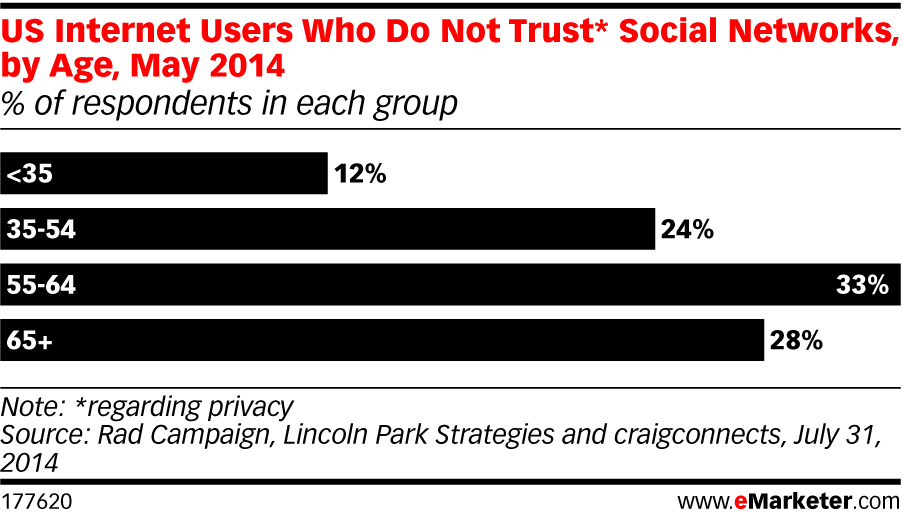According to Reuters, Facebook could be following Apple and Google into the eHealth field. The social networking giant reportedly plans to introduce support communities for people suffering from specific medical ailments and “preventative care” apps to help people generally improve their lifestyle. Given how much Facebook already knows about its users, it comes as no surprise that the company is looking to take advantage of all the voluntarily shared health-related info.
Tag: big data
3 Reasons Healthcare Could Favor Google Over Apple (And 1 Reason Patients Might Not)
With its grand entry into the healthcare industry, Apple looks to leverage its enormous consumer brand popularity and loyalty into building a centralized “data hub” for healthcare. But its primary competitor Google, with its own Android healthcare apps, could eat into Apple’s share with its popular apps, enterprise-friendly approach, and budget-conscious pricing.
As valid as these reasons are, there is one factor that cannot be ignored: data security and privacy. Google has long been known for monetizing whatever data it can obtain. Apple, on the other hand, has recently updated its privacy policy, emphasizing that it is “not in the business of collecting data” for marketing purposes. Not only does this make iOS easier to comply with health privacy laws than Android, it also helps put patients and healthcare practitioners at ease.
POV: How Can Consumers Trust Brands With Personal Information
You may think of consumer data collection—and the resulting privacy concerns—as “corporate evil-doing”. But really, it’s just a delicate value exchange that most brands have yet to figure out how to manage.
In order for consumers to trust brands with their personal data, brands must actively take steps to ensure that:
- Consumers consent to data collection
- Once collected, data remains secure
- Data proves helpful to both the brand and the consumer
Learn more about how to win that consumer trust by downloading the POV here.
Partner Spotlight: Placed
There’s a reason VentureBeat calls Placed the “location-analytics standard”: it tracks over 175,000 users worldwide via a series of opt-in apps, and catalogues their movement through over 200 million locations daily. That staggering amount of intelligence netted it $10 million in its latest round of funding this summer.
How does it work?
To acquire the data, Placed uses a variety of approaches. One notable system is Placed Panels, a mobile app that offers rewards through location-based surveys. Users, known as “Panelists,” complete surveys throughout the day, as their devices are continually tracked in the background. The Panelists are then entered to win gift cards, sweepstakes, or other incentives. There are also opportunities to use the Placed data on mobile sites or partnered apps, and with other publishers.
What happens with the data?
Placed tracks the location data from its users and packages it in helpful, easy-to-understand analytics. Retailers and advertisers can measure locations based on how many users visit, and which sort of user goes where. The data can also measure ad campaign effectiveness by counting how many users walk into a physical store.
The goal is to provide real-world information on movement, identifying which consumers move where, when, and how often. Placed has even published research connecting its data to categories like television network preference, and half of the 25 largest ad networks use Placed data.
How does Placed address privacy concerns?
Given its large and far-reaching collection of data, Placed commits to privacy best practices, early and often:
- Explicit consent is always obtained before any data is tracked. Users may opt-out easily by uninstalling the app.
- Placed creates a value exchange by offering incentives in return for location and device information. That way, users get something in exchange for their data.
- Placed also anonymizes each user. It only understands the info collectively, and third parties are not able to glean specifics on any aspects of the user pool.
So users always have to opt-in, are never revealed to third parties, and get something in return. It’s a good way to ensure their data gets used correctly, and keeps everyone happy.
By The Numbers: Digital Privacy Concerns
As more companies collect personal data, the potential for leaks and scandals has dramatically increased, along with consumers’ concerns about misuse: according to a research conducted by Temkin Group, nearly 75% of the respondents were worried about their personal information, a figure that has steadily risen over the past 3 years.
Different digital platforms, however, encourage varying degrees of trust, as a study by Harris Interactive reveals. A majority (66%) of the survey participants expressed concern for privacy on social media sites—the least trusted channel overall, followed by email and web browsing.
Distrust of social media sites in particular varies between generations. Younger users (those below 35) are more trusting, with only 12% saying they don’t trust such sites. Generally, skepticism increases with age, with one-third of Internet users aged 55 to 64 reporting distrust.
Clearly, digital privacy will continue to be a hot-button issue, so successful brands must carefully respond to consumers’ concerns and take appropriate steps to protect their data.
Partner Spotlight: Higi
Higi is reinventing the in-store health kiosk experience with a hardware solution aimed at bringing quantified self to the masses. We first met them at SXSW over a year ago and they’ve expanded rapidly, most notably closing a deal this month with IZ-ON Media that will put their hardware stations in 10,000 locations— including 4,100 Rite Aids and 1,800 Publix stores. Higi refers to their target market as “Pre-Quantified Self” consumers.
What is Pre-Quantified Self?
The Quantified Self movement is exactly what it sounds like: people using technology to gather data about themselves throughout the day so they can improve their own lives. We’ve seen a number of wearables and apps catch on in this space to measure fitness, sleep, and more, including products from Fitbit, Jawbone, GeoPalz, Withings, and Basis. Consumers adopting these technologies tend to already be tech savvy, but Higi’s goal is to onboard less gadget-minded people into the world of quantified self by introducing them to the category in supermarkets and pharmacies. They refer to this broad target audience as “Pre-Quantified Self.”
How does Higi work?
Higi stations typically live in the pharmacy department and allow you to weigh yourself (by sitting on the unit’s bench), take your blood pressure, and input basic information like height and age. Once your information is collected, you’re given a Higi score— a number that indicates the general state of your health. You set up an account at the machine and are encouraged to download the companion mobile app to continue tracking and improving your health in the future. The app allows you to include information about a variety of activities, including your dietary habits.
What opportunities do Higi stations present for advertisers?
With a regular flow of people taking their blood pressure in-store, Higi stations literally deliver a captive audience, and advertisers have the opportunity to serve video ads on two screens within the station— one at the eye level for people sitting and another at eye level for shoppers walking by. Higi’s deal with IZ-ON Media will allow brands to easily target consumers at scale while they interact with the stations. The machines are also outfitted with the capability to print information, and in the future it’s likely that brands will be able to offer coupons to users tailored to their health needs.
What’s Next For The Sharing Economy
From car rides to groceries, apps like Uber and Instacart have helped fostering a new service market for connecting consumers with similar needs to share a service together. Born out of such market demand, the booming sharing economy is set out to transform the way many service industries conduct their business. But could we take this sharing concept one step further and apply it to big data?
By default, matching another person in your proximity to share a service with requires sharing a lot of personal information. And an economy supported by big data sharing would work seamlessly and even anticipatorily across different service platforms. Despite the potential convenience it may provide, this would most likely be a hard sell to the consumers as privacy concerns persist. Nevertheless, as the sharing economy continues to grow, sooner or later the valuable data it collects will presumably be put into good use. In fact, this might have already happened, as many opt to log in on a new service with their Facebook accounts.
What Brands Are Learning By Looking At Your Selfies
Numerous marketing campaigns have deployed the “send-us-your-selfie” gimmick, but few have realized how much valuable information brands can get by analyzing those shared photos. Ditto Lab offers a platform that specializes in image analytics. By gathering those image-based data about brands, valuable intelligence such as consumer interest and brand affiliation could be made available to advertisers, potentially adding a new dimension to the acquisition of big data.
Update: Tumblr has reportedly started working with Ditto Lab to gather data on brand affiliation.
Apple In Talks With Hospitals About Centralized Health Data
According to Reuters, Apple is in serious talks with major healthcare providers to convince them to adopt its newly introduced HealthKit API, which would make Apple a central “hub of health data”. Clearly, the Cupertino company is betting big on its health app suite, and similar major pushes are to be expected before its official launch with iOS 8.
The Quantified Sports Fan: Yell at Your TV and Be Counted
Watching live sports can get very emotional, even for the fans sitting in front of their TVs. That’s why Fanmode, a London-based startup, is developing an app to help the audience express their feelings and be heard. The company even has plans to integrate the app into wearables for easier reaction tracking. By aggregating real-time sentiment data during live sport events, Fanmode’s platform would be transformed into a virtual arena, where all fans are connected to the action. It could also potentially open up a feedback loop between the fans and their teams, essentially revolutionizing the way we watch live sports.



